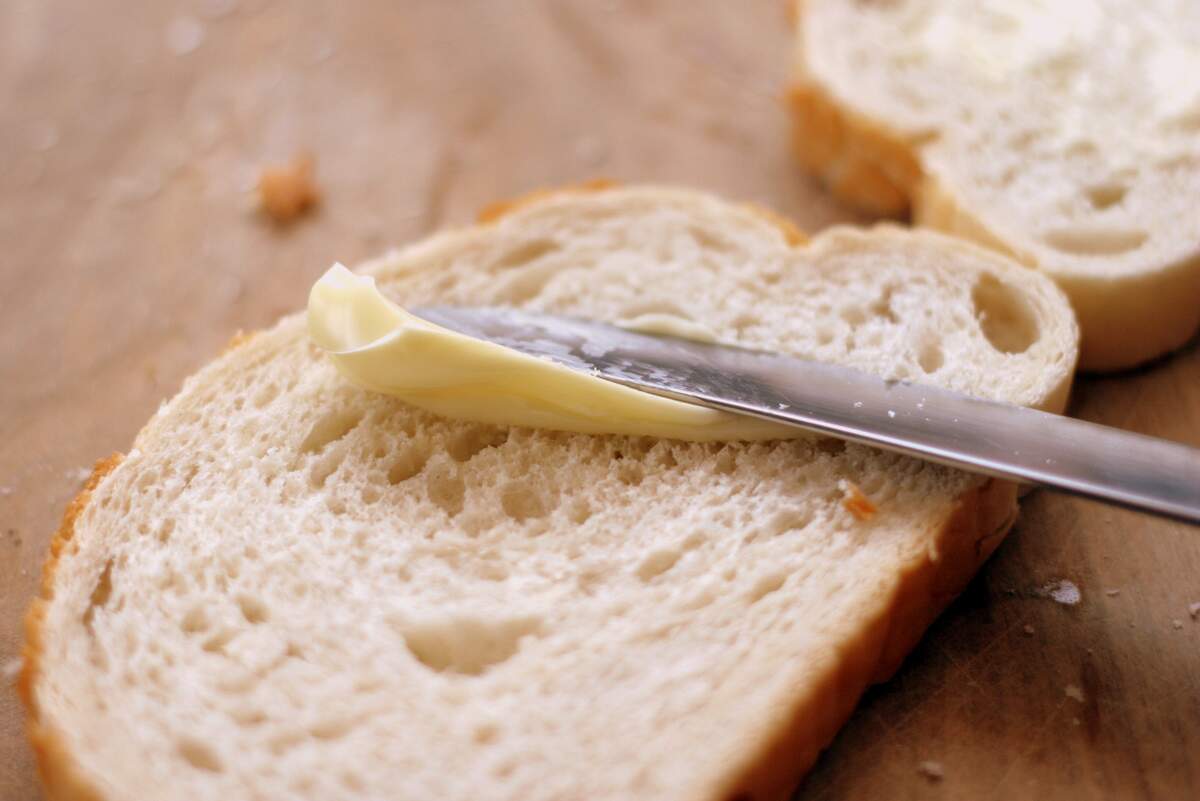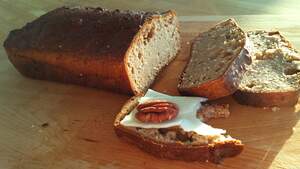

National Butter Day
Observed
annually on November 17th (since 2021)
Dates
Founded by
Associated Milk Producers Inc. (AMPI) on November 3rd, 2021
Dinner Bell Creamery on November 3rd, 2021
Tags
Food & Drink
Hashtags
Sources
Associated Milk Producers Inc. (AMPI), a dairy farmer-owned cooperative, started Dinner Bell Creamery in 2019 "to bring the quality and experience of 50 years of partnership between dairy farm families and skilled buttermakers and cheesemakers to home cooks." When working on marketing plans for their Dinner Bell Creamery butter products, AMPI learned there wasn't a holiday devoted to butter, and decided to make one. They chose November 17 for the date because the holiday season was coming up. “We felt celebrating butter at the beginning of the holiday cooking and baking season would be fun and very appropriate. Butter is a key ingredient in so many dishes and desserts enjoyed this time of year," said Sarah Schmidt, AMPI vice president.
National Butter Day was thus established through Dinner Bell Creamery. The day is "dedicated to celebrating butter as food, appreciating butter's long history, and honoring the storied tradition of buttermaking in the U.S." It is celebrated "by purchasing U.S.-made butter, cooking and baking with butter, and seeking out butter-rich treats."
Butter is made by churning fresh or fermented cream or milk, a process that separates butterfat from buttermilk. Butter consists of approximately 80% butterfat, along with milk proteins and water. Butter is a firm solid when refrigerated, but it softens at around 60 degrees and thus is easy to spread at room temperature. Butter is commonly used for baking, for pan frying, for making sauces, and as a condiment when melted. Butter from cow's milk is most common, but it can be made from other mammals too, such as goats, sheep, yaks, and buffalo.
There are several types of butter. Salted butter helps preserve butter and give it flavor. Unsalted butter is good for cooking and baking since an appropriate amount of salt can be added separately while making a recipe. Whipped butter is fluffier and more spreadable because nitrogen gas is added to it.
European-style butter is made with cream that is churned slower and for a longer time than other butter. Its butterfat content is at least 82%. There are several distinct European-style butters made from different geographical parts of the continent. European-style butter is often made with cultured butter. Cultured butter is made from cultured or slightly fermented cream. It is rich in flavor and suited for baking because its low moisture content makes pastries flakier and cakes fluffier. Sweet cream butter is butter made with fresh cream. It first became common in the nineteenth century with the rise of refrigeration and the mechanical cream separator. It is more common in the United States and the United Kingdom compared to cultured butter, which is more common in continental Europe.
Clarified butter is made by melting butter so that the milk proteins and water can be removed. The water evaporates and the milk proteins are skimmed off, and what remains is almost all butterfat. Clarified butter may be used for frying and sautéing because it doesn't burn at high temperatures. It is also often used as a dipping sauce for seafood. Ghee is clarified butter that has been heated to about 250 degrees Fahrenheit after the water is removed, which turns the milk solids brown, gives the butter flavor, and produces antioxidants that keep it from turning rancid.
According to folklore, butter was discovered by accident by a Persian goatherd in around 8,000 BCE. He was transporting goat milk in animal skin pouches on a bumpy road. During the journey, the milk churned itself and became butter. When the goatherd discovered this, he at first thought the milk was ruined, but upon tasting it, found he had unknowingly created something completely new that was tasty.
By the twelfth century, butter was an important commodity in Northern Europe, particularly in Scandinavian countries, where a large amount of it was exported and was integral to the economy. Butter's success here was in part because it could be stored longer in this Northern climate compared to other areas. In general, butter was a common food in Europe from the fall of Rome through the Middle Ages, often being eaten by peasants. It became more accepted by the upper class after the Roman Catholic Church began allowing it during Lent in the sixteenth century. Bread and butter became a common food for the European middle class, and melted butter became a common sauce for meat and vegetables, particularly with the English. Since the seventeenth century, butter has been an essential component of French cooking.
Most butter was made by hand on farms until the nineteenth century. Farmers sold it at local markets for extra income. Wood presses with carved decorations identified the farm that produced the butter. The process became mechanized in the nineteenth century, and stick butter—which wasn't decorated—became the norm. The first butter factories in the United States began operation in the 1860s and became more efficient in the next decade when the centrifugal cream separator started being used. Butter today is packaged in 4-ounce sticks, wrapped in wax or foil paper, with four of them sold together in a one-pound package. Sticks of butter east of the Rocky Mountains are generally packaged in the Elgin or Eastern-pack shape, while those west of the mountains are packaged in the shorter and thicker Western-pack shape. Statistics show that Americans eat about 25 sticks of butter a year.
There was a decline in butter consumption in most Western nations during the twentieth century, due to the rise of margarine, which was cheaper and was perceived as being healthier. Margarine overtook sales of butter in the United States in the 1950s and remained ahead of it for about a half century. Today butter remains a household staple, being used in many cuisines and as an important ingredient in American baking, especially during the holiday season. National Butter Day kicks off this time of year when more butter is eaten than at any other time, which surely is something to celebrate!
How to Observe National Butter Day
- Celebrate butter as food by cooking and baking with butter and eating butter-rich treats. Find and make a few recipes where butter is an integral component, whether they be sweet or savory. Today also happens to be Homemade Bread Day, so you could bake some homemade bread and spread some butter on it. Post photos of your creations on social media along with the hashtag #NationalButterDay.
- Appreciate butter's long history by reading a book about butter such as Butter: A Rich History by Elaine Khosrova, and by exploring more about butter from the American Butter Institute and the Butter Journal.
- Honor the storied tradition of buttermaking in the United States by purchasing U.S.-made butter or making your own butter.





















